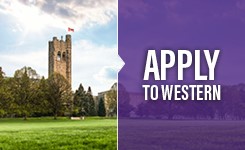Frequently Asked Questions
Why is participating in an Experiential Learning (EL) opportunity desirable?
EL is invaluable for giving students the opportunity to:
- try out career paths,
- apply theoretical knowledge in real-world environments,
- professionalize,
- gain work experience that will help to make them competitive on the job market, and
- build confidence in their skills, abilities, and strengths.
How many EL credits do I need to fulfill my SASAH program requirements?
When should I complete my EL credit(s)?
Students can count experiences in the summer, fall, or winter, and the work term does not have to coincide with an academic terms’ start and end dates. Students must, however, contact SASAH’s EL Specialist before or, at least, at the very beginning of a work experience to have it counted.
What types of EL opportunities can be counted toward SASAH's EL requirement?
The kind of work we count for the EL credit must . . .
- be mentored in an ongoing way by a professional in the field.
- give a realistic preview of a career.
- offer meaningful work related to a student's field of study or career interest.
- allow for career exploration and development.
- encourage the development of new hard and soft/transferable skills.
We will consider counting opportunities in almost any area, from the arts/culture and non-profit to the tech and corporate sectors. These can include:
- Communications and social media
- Editing & writing (e.g., journalism, grant writing, and copywriting)
- Educational programming
- Environmental sustainability
- Event coordination
- Fundraising
- Gallery and museum curation
- Marketing
- Office administration
- Program administration
- Project management
- Public relations
- Research & analysis
- Social-service delivery
- Technical writing
- Video production
- Web design
What organizations do you partner with?
We work on an ongoing basis with several organizations and programs within Western to develop internships and CELs specifically for SASAH students. Students are also welcome to find opportunities on their own. If the opportunity is deemed eligible and the organization is willing to help us do so, we will work with the student’s supervisor to count the experience for credit.
For a list of past and current partners, see our SASAH Partners page.
How do I find an EL opportunity?
Students have several options:
- they can apply for internships and CELs offered through our partners (as with any job application, acceptance is not guaranteed),
- they can apply to be assigned to a fall and/or winter CEL through the Student Success Centre (4th-year students only),
- they can find their own summer-, fall-, or winter-term internship or CEL through their network or job-search sites, such as Western Connect, Glassdoor, LinkedIn, and Monster, and request that it be counted for credit.
Can I count a paid internship for my EL credit?
Why are there assignments attached to an EL opportunity?
The assignments are designed to encourage students to . . .
- analyze and evaluate their experiences,
- learn about themselves and about types of careers that may be open to them,
- think about their skills, abilities, and strengths and how they have applied them,
- consider if they would want to pursue what they did in their work experience as a career.
- further develop soft skills—like critical analysis, communication, and public speaking—that are highly desirable in the workplace.


